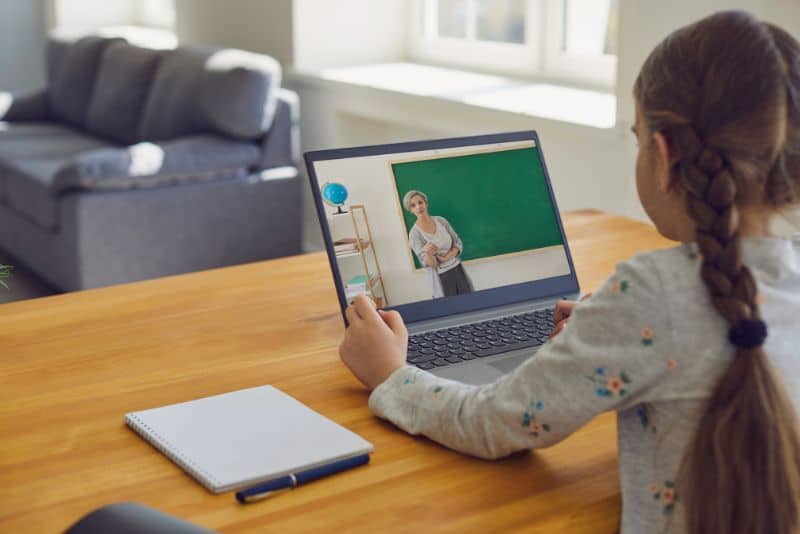The world of education has undergone a seismic shift in recent years, with the rapid rise of online teaching. This transformation has been driven by various factors, including technological advancements and the global pandemic. Whether you’re an educator considering a transition to online teaching or a student navigating the digital learning landscape, it’s crucial to understand the ins and outs of this evolving educational paradigm.
In this blog post, we’ll delve into some important information you should know about online teaching, shedding light on its benefits, and challenges, and offering valuable tips to make the most of this mode of learning.

The Advantages of Online Teaching
Online teaching offers a multitude of advantages for both educators and students. One of the primary benefits is flexibility. Students can access course materials and lectures from anywhere with an internet connection, allowing them to tailor their learning schedules to their individual needs. For educators, this flexibility extends to their teaching methods and locations, enabling a more diverse and inclusive educational experience. Furthermore, online teaching often opens doors to a global classroom. Students from different parts of the world can enroll in courses, fostering a rich diversity of perspectives and experiences. Also, by exploring some tips for online teaching, you can improve your teaching techniques easily. This will enhance the learning environment and prepare students for a globalized workforce.
Challenges in Online Teaching
While online teaching has its merits, it also presents unique challenges. One of the most common hurdles is maintaining student engagement. The absence of face-to-face interaction can make it difficult to gauge student reactions, leading to potential disengagement. Educators must employ various strategies to keep students actively participating, such as interactive online platforms, group discussions, and timely feedback.
Another challenge is the digital divide. Not all students have equal access to technology and high-speed internet, which can create disparities in learning opportunities. Addressing this issue is vital to ensure equitable access to education. Educational institutions and policymakers must work together to bridge this gap, providing resources and support to underserved communities.

Tips and Tricks for Online Teaching
Effective Communication: Clear and timely communication is the cornerstone of successful online teaching. Establish clear expectations, respond promptly to emails, and provide detailed instructions for assignments. Utilize video conferencing for real-time discussions to foster a sense of connection.
Interactive Learning: Keep students engaged through interactive activities. Use discussion boards, virtual breakout rooms, and collaborative projects to encourage active participation. Incorporate multimedia elements like videos and simulations to make lessons more dynamic.
Assessment Strategies: Rethink your assessment methods. Instead of relying solely on traditional exams, consider diverse evaluation techniques such as essays, group projects, and presentations. This not only prevents cheating but also assesses different skills.
Tech Troubleshooting: Equip yourself with technical troubleshooting skills. Familiarize yourself with the online learning platform and anticipate common technical issues. Guide students on resolving common problems to minimize disruptions.
Supportive Resources: Offer a variety of learning resources. Curate a collection of online articles, videos, and supplementary materials that enrich the course content. This provides students with additional avenues for exploration.
Feedback and Adaptation: Feedback and adaptation are the twin pillars of effective online teaching. In the realm of online education, where the physical distance between educators and students can sometimes feel vast, feedback serves as a crucial bridge. It provides a window into the student experience, offering insights into their comprehension, engagement, and challenges. By actively seeking and valuing feedback from students, educators can tailor their teaching methods, materials, and communication to better meet the needs of the learners. This iterative process of adaptation is at the heart of responsive online teaching, ensuring that the educational journey remains dynamic and student-centered.
Building a Learning Community: Building a learning community is a fundamental aspect of successful online teaching. It involves creating an environment where students feel connected to both their peers and the instructor, fostering a sense of belonging and shared purpose. This community goes beyond the virtual classroom, extending to discussion forums, social media groups, and collaborative projects. Through active engagement and participation, students not only enhance their understanding of the course material but also benefit from the diverse perspectives and experiences of their fellow learners. As an educator, nurturing this community requires facilitating discussions, encouraging peer interactions, and promoting a culture of respect and inclusivity. When done effectively, it transforms online courses into vibrant spaces where knowledge is co-created and relationships are formed, enhancing the overall learning experience.
In the ever-evolving landscape of education, online teaching has emerged as a powerful tool. It offers flexibility, global reach, and diverse learning opportunities, but it also comes with its set of challenges. By understanding these dynamics and implementing effective strategies, educators can create engaging and inclusive online learning environments. Remember, successful online teaching isn’t just about delivering content; it’s about fostering meaningful connections and facilitating growth in a digital age.

